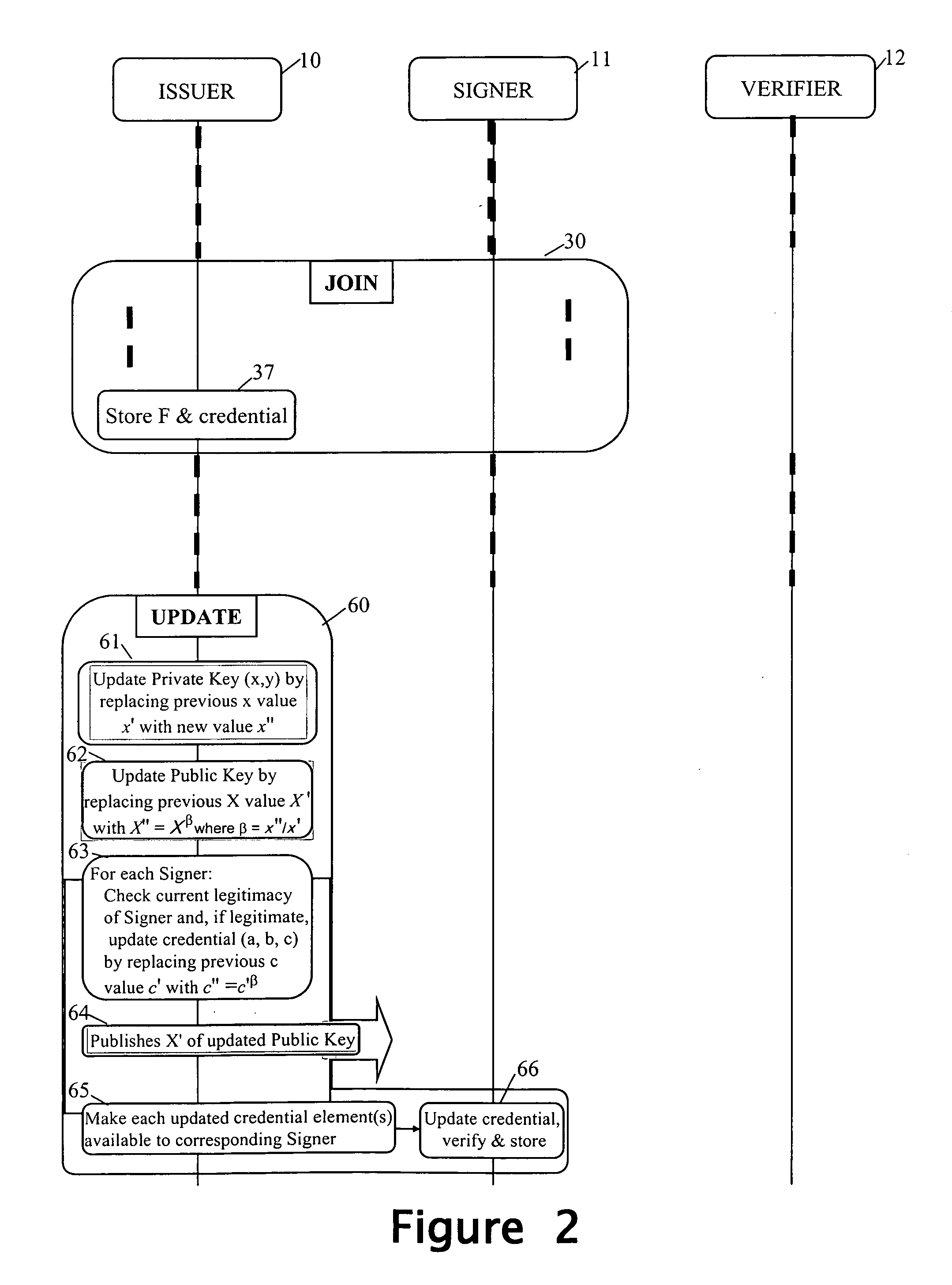Revocation for direct anonymous attestation
- Summary
- Abstract
- Description
- Claims
- Application Information
AI Technical Summary
Problems solved by technology
Method used
Image
Examples
Embodiment Construction
[0020]Embodiments of the invention are described below both for the original DAA scheme set out in the paper by Brickell, Camenisch Chen referenced above, and for the bilinear-map based DAA scheme described in above-mentioned paper by Brickell, Li, and Chen.
[0021]In order to facilitate an understanding of the invention, a detailed description will be first be given of an existing DAA scheme which employs a known revocation solution; the enhanced bilinear-map based DAA scheme has been chosen for this purpose as it is most simply explained. Some details will first be given of various underlying techniques and principles that are utilized by the enhanced bilinear-map based DAA scheme.
Bilinear Maps
[0022]As indicated above, the example DAA scheme to be described below make use of a bilinear map e: G×G→G, where G and G denotes two groups of prime order q. The map e satisfies the following properties:[0023]1. Bilinear. For all P, QεG, and for all a, bεZqa, e(Pa,Qb)=e(P,Q)ab.[0024]2. Non-de...
PUM
 Login to View More
Login to View More Abstract
Description
Claims
Application Information
 Login to View More
Login to View More - R&D
- Intellectual Property
- Life Sciences
- Materials
- Tech Scout
- Unparalleled Data Quality
- Higher Quality Content
- 60% Fewer Hallucinations
Browse by: Latest US Patents, China's latest patents, Technical Efficacy Thesaurus, Application Domain, Technology Topic, Popular Technical Reports.
© 2025 PatSnap. All rights reserved.Legal|Privacy policy|Modern Slavery Act Transparency Statement|Sitemap|About US| Contact US: help@patsnap.com



